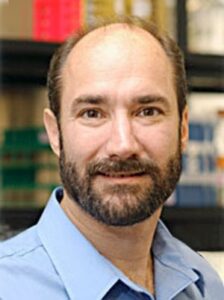심리학이 알려주는 연구의 기술: 논리적 사고부터 논문 작성까지 – 서수연
본 세미나에서는 성신여자대학교 서수연 교수님께서 "심리학이 알려주는 연구의 기술: 논리적 사고부터 논문 작성까지"라는 내용으로 강연을 해주실 예정입니다.
본 세미나에서는 성신여자대학교 서수연 교수님께서 "심리학이 알려주는 연구의 기술: 논리적 사고부터 논문 작성까지"라는 내용으로 강연을 해주실 예정입니다.
In this talk, we discuss the paper "The Large Language Models on Biomedical Data Analysis: A Survey" by Wei Lan et.al, IEEE J. Biomedical and Health Informatics, 2025, at the Journal Club. Abstract With the rapid development of Large Language Model (LLM) technology, it has become an indispensable force in biomedical data analysis research. However, …

Abstract The standard theory of infectious diseases, tracing back to the work of Kermack and McKendrick nearly a century ago, has been a triumph of mathematical biology, a rare marriage of theory and application. Yet the limitations of its most simple representations, which has always been known, have been laid bare in dealing with COVID-19, …
In this talk, we discuss the paper "A biological model of nonlinear dimensionality reduction" by K. Yoshida and T. Toyoizumi, Science Advances, 2025, at the Journal Club. Abstract Obtaining appropriate low-dimensional representations from high-dimensional sensory inputs in an unsupervised manner is essential for straightforward downstream processing. Although nonlinear dimensionality reduction methods such as t-distributed stochastic neighbor …

Abstract Our present healthcare system focuses on treating people when they are ill rather than keeping them healthy. We have been using big data and remote monitoring approaches to monitor people while they are healthy to keep them that way and detect disease at its earliest moment presymptomatically. We use advanced multiomics technologies (genomics, immunomics, …
In this talk, we discuss the paper "Designing microplastic-binding peptides with a variational quantum circuit–based hybrid quantum-classical approach" by R.C. Vendrell et.al., Sci. Adv. 2024 at the Journal Club. Abstract De novo peptide design exhibits great potential in materials engineering, particularly for the use of plastic-binding peptides to help remediate microplastic pollution. There are no …

Abstract Individual human cancer cells often show different responses to the same treatment. In this talk I will share the quantitative experimental approaches my lab has developed for studying the fate and behavior of human cells at the single-cell level. I will focus on the tumor suppressor protein p53, a transcription factor controlling genomic integrity …
In this talk, we discuss the paper "Frequency-Dependent Covariance Reveals Critical Spatiotemporal Patterns of Synchronized Activity in the Human Brain" by Rubén Calvo et al., Physical Review Letters 2024, at the Journal Club. Abstract Recent analyses, leveraging advanced theoretical techniques and high-quality data from thousands of simultaneously recorded neurons across regions in the brain, compellingly …

Abstract The advent of single-cell transcriptomics has brought a greatly improved understanding of the heterogeneity of gene expression across cell types, with important applications in developmental biology and cancer research. Single-cell RNA sequencing datasets, which are based on tags called universal molecular identifiers, typically include a large number of zeroes. For such datasets, genes with …
In this talk, we discuss the paper "Accurate predictions on small data with a tabular foundation model" by Noah Hollmann et al., Nature (2025). Abstract Tabular data, spreadsheets organized in rows and columns, are ubiquitous across scientific fields, from biomedicine to particle physics to economics and climate science1,2. The fundamental prediction task of filling in …
In this talk, we discuss the paper, "Entrainment and multi-stability of the p53 oscillator in human cells" by Alba Jiménez et al., Cell Systems, 2024. Abstract The tumor suppressor p53 responds to cellular stress and activates transcription programs critical for regulating cell fate. DNA damage triggers oscillations in p53 levels with a robust period. Guided by …
In this talk, we discuss the paper "Identifying key drivers in a stochastic dynamical system through estimation of transfer entropy between univariate and multivariate time series" by Julian Lee, Physical Review E, 2025. Abstract Transfer entropy (TE) is a widely used tool for quantifying causal relationships in stochastic dynamical systems. Traditionally, TE and its conditional …